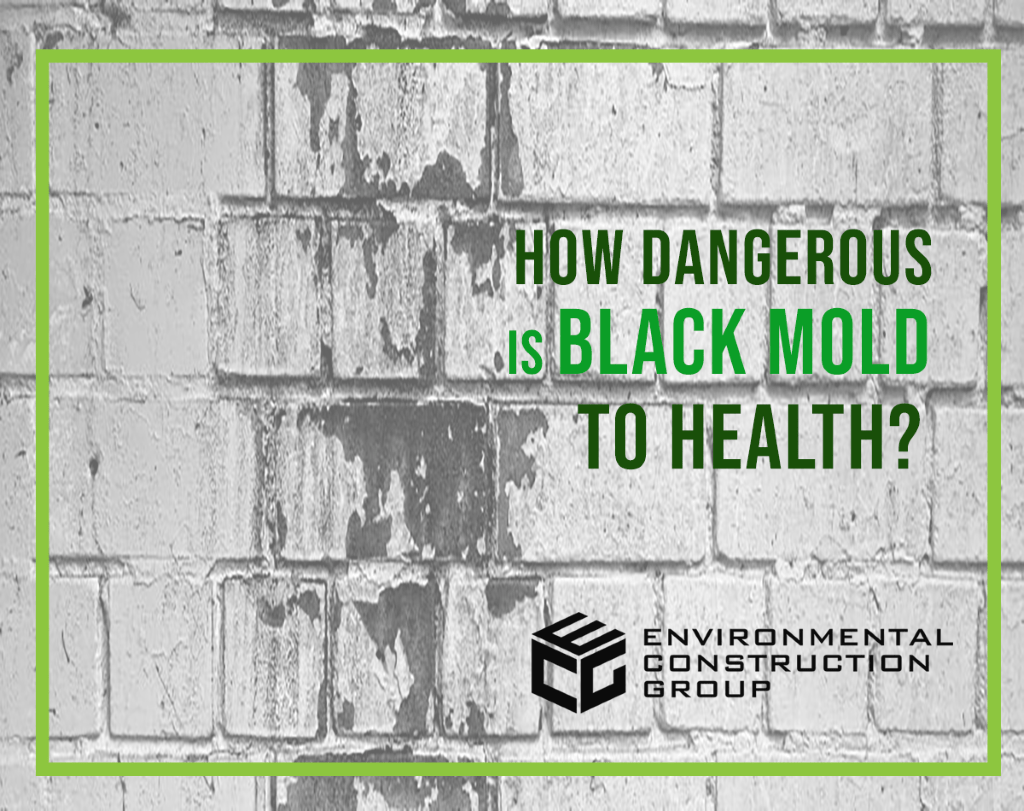How Dangerous is Black Mold to Health?
Mold in buildings and homes can be a costly and dangerous problem; particularly when infestations of toxic black mold occur. Hearing about mold can be scary, especially if it’s in your home or business and it’s making you and other people sick. It can poison your family, your co-workers, your friends, and even your pets.
Toxic black mold, or Stachybotrys chartarum, as it’s known to scientists, can release spores as it feeds on organic materials in common household materials like drywall, carpet, insulation or sub-flooring that have been exposed to moisture. These spores, if ingested or inhaled, can cause a range of unpleasant and even dangerous symptoms in humans or pets.
The spores of black mold float in the air, and they’re too small to see. If you breathe them in and they start to make you sick, you should never assume that they will go away on their own. The mold will spread, and the problem will only become worse.
Black Mold Health Symptoms
Despite the commonly held belief that black mold exposure is a serious health concern, no convincing research suggests that exposure to this type of mold causes conditions such as cancer or lung disease.
However, some people may be more sensitive to mold spores than others, and they may develop respiratory symptoms after inhaling even a small number of spores. In large quantities, mold spores can cause ill health in almost anyone.
The main health concerns seem to relate to allergies and irritation, which typically cause respiratory symptoms.
People with weakened immune systems may also have a risk of fungal infection.
Understanding black mold symptoms and health effects can help you and your family or business, identify these indicators and take swift action to protect your health.
Prevention
The most effective way to prevent mold growth is to monitor the humidity level in the building. It should be no higher than 50% throughout the day.
Check the humidity level regularly, as it can change every few hours.
Use a dehumidifier if necessary, especially during humid months.
To prevent mold, a person can also take the following steps:
- Regularly inspect the building for signs of water damage and mold.
- Clean the bathroom regularly and tackle mold and mildew as soon as it appears.
- Use exhaust fans in the kitchen and bathroom or open windows to improve ventilation.
- Install an air conditioner with a high efficiency particulate air filter — better known as a HEPA filter — to remove mold spores from the air.
- Add mold inhibitors to paints to stop mold growth on walls and ceilings.
- Deal with any flooding promptly by drying out soft furnishings and cleaning wet items with commercial products.
- Dispose of flood-damaged carpets.
Mold Remediation
We pride ourselves in providing Mold Remediation Services you can depend on. Contact us to get started on your next project, Call us: 562-438-7999.





